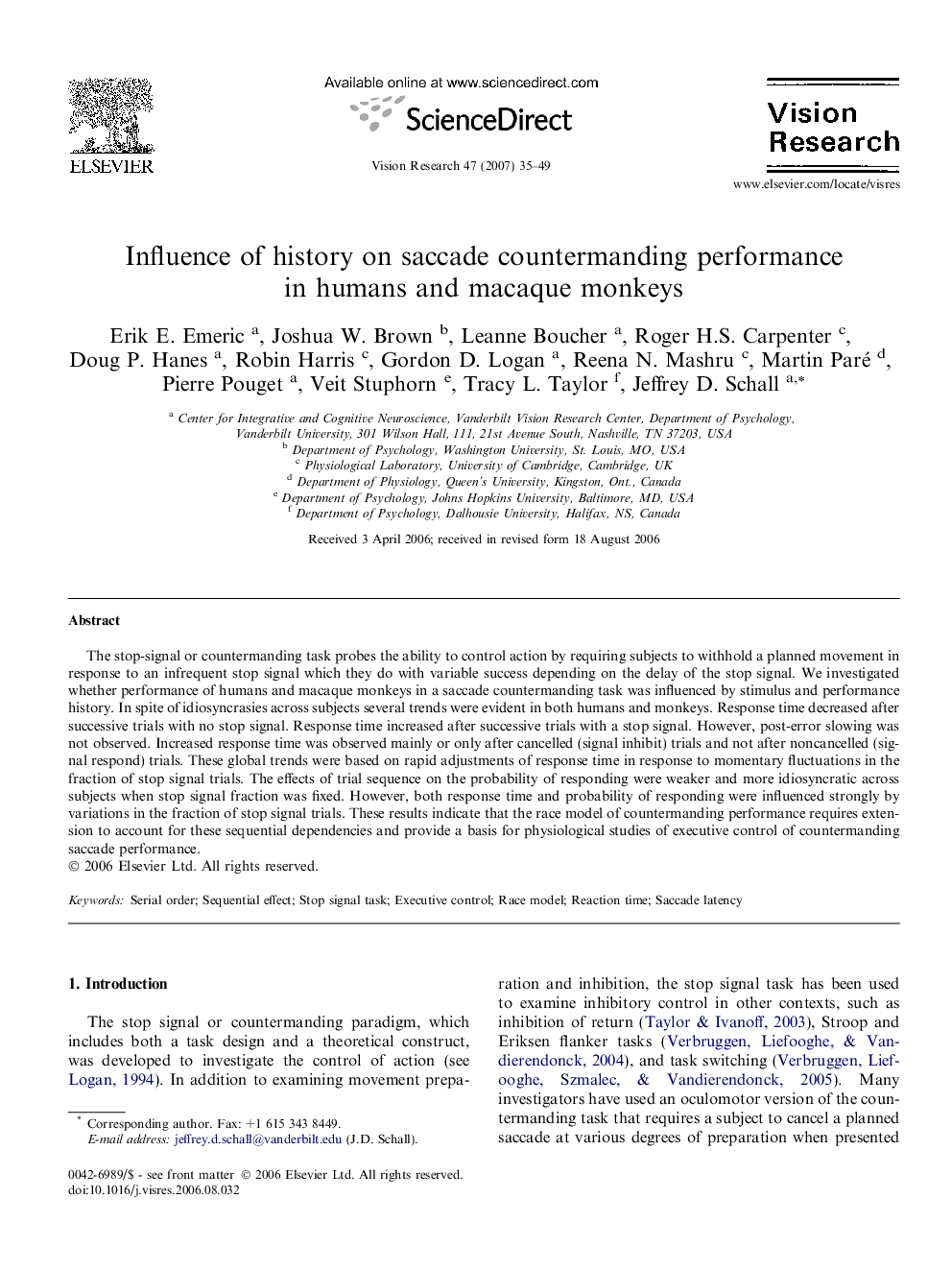| Article ID | Journal | Published Year | Pages | File Type |
|---|---|---|---|---|
| 4035811 | Vision Research | 2007 | 15 Pages |
The stop-signal or countermanding task probes the ability to control action by requiring subjects to withhold a planned movement in response to an infrequent stop signal which they do with variable success depending on the delay of the stop signal. We investigated whether performance of humans and macaque monkeys in a saccade countermanding task was influenced by stimulus and performance history. In spite of idiosyncrasies across subjects several trends were evident in both humans and monkeys. Response time decreased after successive trials with no stop signal. Response time increased after successive trials with a stop signal. However, post-error slowing was not observed. Increased response time was observed mainly or only after cancelled (signal inhibit) trials and not after noncancelled (signal respond) trials. These global trends were based on rapid adjustments of response time in response to momentary fluctuations in the fraction of stop signal trials. The effects of trial sequence on the probability of responding were weaker and more idiosyncratic across subjects when stop signal fraction was fixed. However, both response time and probability of responding were influenced strongly by variations in the fraction of stop signal trials. These results indicate that the race model of countermanding performance requires extension to account for these sequential dependencies and provide a basis for physiological studies of executive control of countermanding saccade performance.
